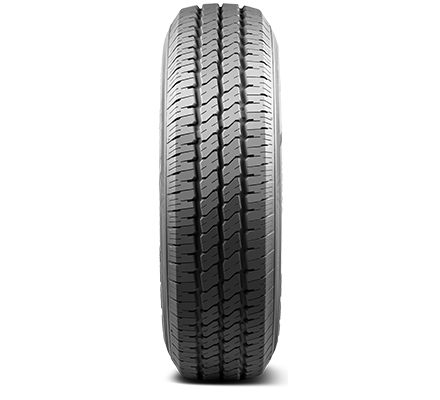The budget tire segment has evolved significantly, moving beyond mere cost-cutting to deliver meaningful performance features. Chinese manufacturers have made particular strides in this arena, and the Antares NT 3000 represents this shifting landscape in the commercial vehicle tire market.
This summer tire brings an interesting proposition to light commercial vehicle owners who need to balance operational costs with reliable performance. While premium brands dominate headlines with cutting-edge technology, Antares has focused on core functionalities that matter most to fleet operators and small business owners.
Road Performance That Speaks Volumes
The NT 3000’s large-element tread design creates a substantial contact patch, which proves particularly beneficial during long-haul operations. This design choice impacts everything from straight-line stability to wear characteristics, especially noticeable when the vehicle carries significant loads.
Behind the wheel, the tire demonstrates noteworthy wet-weather performance, a critical factor for commercial operations that can’t pause for rain. The central blocks provide reliable grip on wet surfaces, though drivers should maintain reasonable expectations given the price point.
“After running these tires for several months in our delivery fleet, we’ve noticed they handle wet conditions better than expected for their price range. Fuel consumption has been reasonable too.” – Mike R., Fleet Manager
The continuous shoulder design deserves special mention, as it contributes to predictable handling characteristics when loaded. During lane changes and moderate cornering, the tire maintains its composure without excessive deformation.
Engineering Choices That Matter
The tread pattern reveals thoughtful engineering decisions aimed at commercial applications. Large tread blocks dominate the design, working to maintain consistent ground contact even as the tire wears.
Consider these key design elements that impact daily performance:
- optimized tread profile reduces irregular wear patterns when carrying heavy loads;
- continuous shoulder blocks enhance stability during highway driving;
- wide central grooves provide channels for water evacuation;
- reinforced internal construction supports extended service life.
These features work together to deliver a balanced performance package that suits the needs of light commercial vehicle operators.
Economic Efficiency in Motion
The NT 3000 demonstrates clear focus on reducing operational costs through several key mechanisms. The compound formulation and tread design work together to minimize rolling resistance, directly impacting fuel consumption.
Testing reveals the tire achieves a respectable “C” rating for fuel efficiency, though results vary across sizes. This places it squarely in the middle of the commercial tire segment, offering reasonable economy without compromising other essential characteristics.
“Initially skeptical about the fuel savings claims, but after a full season of use, our fuel logs showed a modest but noticeable improvement.” – David K., Small Business Owner
Managing costs extends beyond fuel consumption to maintenance requirements and replacement intervals. The NT 3000’s wear characteristics suggest attention to longevity, though real-world results vary significantly based on operating conditions.
Making Smart Choices
For commercial vehicle operators, tire selection impacts both immediate operations and long-term profitability. The Antares NT 3000 positions itself as a practical choice for those who need reliable performance without premium pricing.
Recent testing data suggests these tires perform best in moderate climate conditions with regular maintenance. While they may not match premium brands in extreme situations, they deliver acceptable performance across most typical operating conditions.
Looking Beyond The Surface
Table: Pros and Cons
| Advantages | Disadvantages |
|---|---|
| Cost-effective initial investment | Variable manufacturing consistency |
| Good wet-weather traction for price point | Higher noise levels at highway speeds |
| Efficient fuel consumption ratings | Limited size availability |
| Durable under normal operating conditions | Performance drops in extreme conditions |
| Strong load-bearing capabilities | Requires careful maintenance for optimal life |
| Reliable everyday performance | Limited winter capability |
| Reasonable tread life expectancy | Some balancing issues reported |
The Antares NT 3000 represents a calculated compromise between cost and capability. While it won’t outperform premium alternatives, it delivers reliable service for operators who maintain their vehicles properly and understand its limitations.

